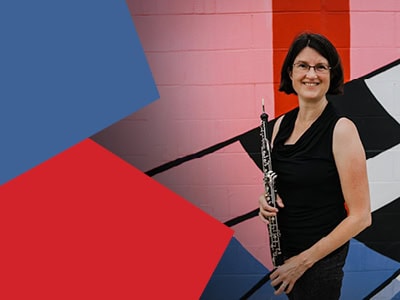
Musician Favorites: From Jennet
January 11, 2026 / 2:30 p.m.
Handel’s brilliance meets Jennet and Friends! Principal Oboist Jennet Ingle walks us through the work of Handel, Morricone, Stacy Garrop and a world premiere concerto by Kincaid Rabb with guest conductor Fernanda Lastra! Program GEORGE FRIDERIC HANDEL “Entrance of the Queen of Sheba” Water Music Suite No. 2 Stacy GARROP Spectacle of Light Kincaid RABB “All This to Say” for Solo Oboe and Chamber Orchestra Heather NIEMI SAVAGE Daughter of the Stars Esteban BENZECRY Obertura Tanguera, homenaje a Astor Piazzolla Program Notes “Entrance of the Queen of Sheba” GEORGE FRIDERIC HANDEL Born: March 5, 1685, Halle, Germany Died: April 14, 1759, London, England Composed: 1749 Duration: 3 minutes Trained in Italy, George Frideric Handel settled in London and first gained work composing Italian opera. When tastes shifted in the 1730s, he pivoted to the English oratorio: a concert work based on biblical subjects, performed without staging or scenery, with chorus and orchestra to the fore. These works were cheaper to produce, easier to tour, and proved to be more lucrative than opera had ever been. Solomon (1749), from which “The Entrance of the Queen of Sheba” is drawn, stands as a vivid example of the form. Set to Newburgh Hamilton’s libretto and based the books of Kings and Chronicles, it portrays Solomon’s reign in scenes of pious dedication, pastoral calm, and civic splendor. The “Entrance of the Queen of Sheba,” opens Act III as the visiting monarch and her retinue arrive at Solomon’s court. Handel sets the procession as a bright, quick-stepping sinfonia in B-flat major, led by two oboes in playful dialogue over buoyant strings and continuo. This movement has enjoyed an enduring popularity that has overshadowed Solomon itself and is often heard at weddings and receptions across the globe. Most recently, this work was featured in the opening ceremonies of the 2012 London Olympics and at the coronation of King Charles III in ...

